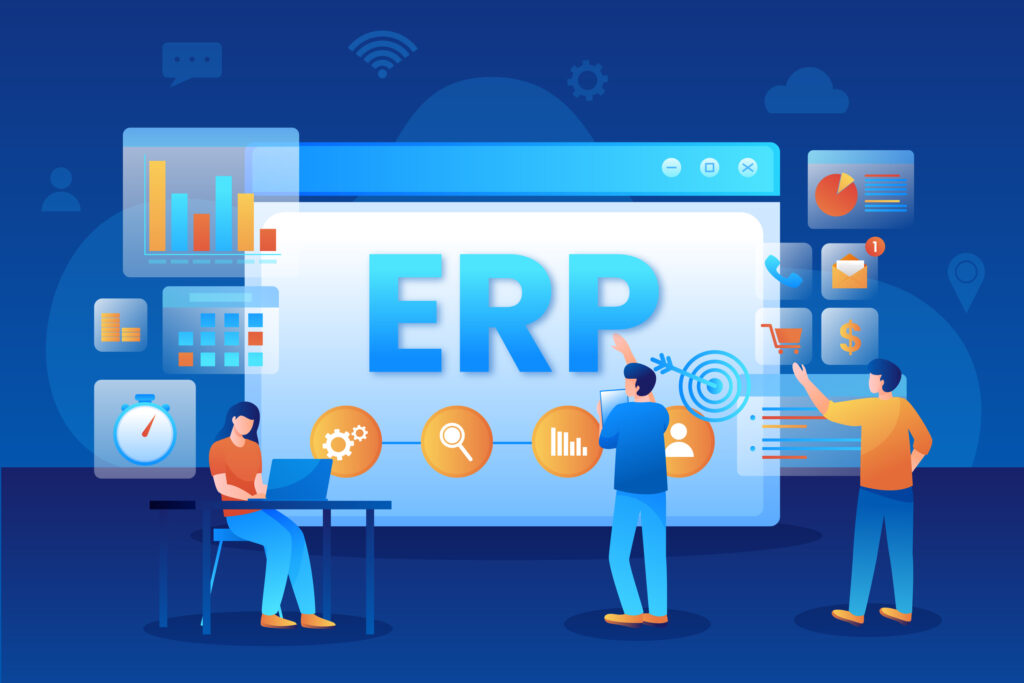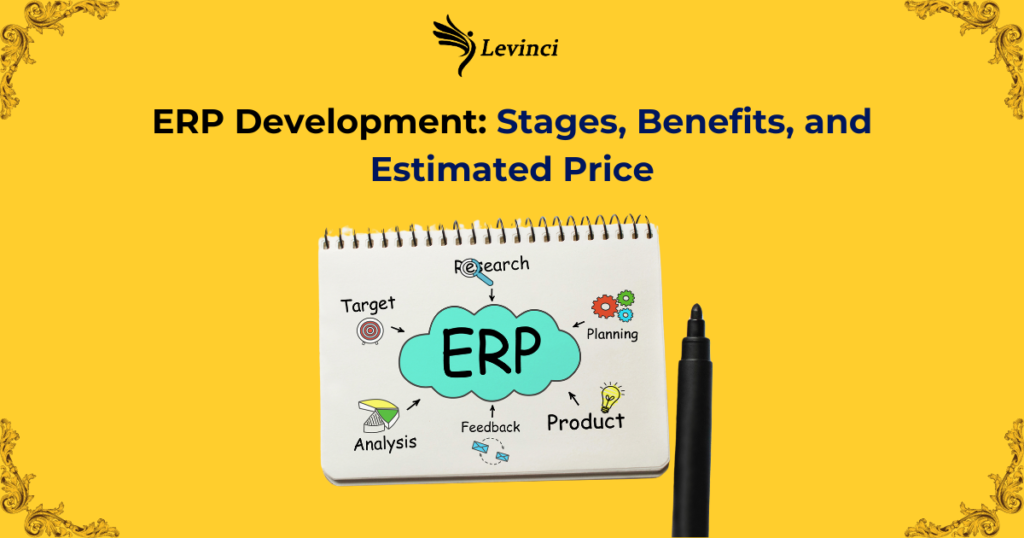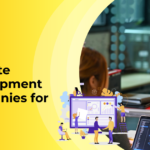ERP development refers to the process of creating Enterprise Resource Planning software. ERP development helps businesses improve efficiency, enhance decision-making, stronger customer relationships, etc. So what stages does ERP development include? How much does ERP development cost? Levinci will answer in the article below!
What is an ERP development service?
An ERP (Enterprise Resource Planning) development service involves creating customized ERP software solutions tailored to meet the specific needs of businesses for managing various aspects of their operations.

ERP systems help businesses manage more easily because information is integrated into a single platform. In particular, ERP Systems provides real-time access to accurate data and analytics, enabling managers to make informed decisions quickly. Besides, by automating repetitive tasks and providing tools for collaboration and communication, ERP systems enhance productivity across the organization.
Why should businesses develop an ERP system?
Businesses should consider developing an ERP (Enterprise Resource Planning) system for several reasons, as it can offer numerous benefits that contribute to improved efficiency, productivity, and competitiveness.

ERP Systems helps connect information and data of all departments in a single platform. Therefore, businesses will manage human resource information and work performance more easily. In particular, ERP can customize features and tools to meet each business’s needs.
learn more why is ERP is important? And why many companies use ERP software?
Here are some compelling reasons why businesses should develop an ERP:
- Streamlined workflows: An ERP integrates various departments like finance, inventory, and HR, eliminating data silos and redundant tasks. This creates a smoother flow of information and reduces wasted time.
- Enhanced visibility: Real-time data across all departments allows for better decision-making and faster issue identification.
- Enhanced efficiency: By automating manual tasks, standardizing processes, and reducing redundant activities, ERP systems help improve efficiency throughout the organization. Employees can focus on more strategic tasks rather than spending time on administrative work.
- Improved Customer Service: ERP provides a 360-degree view of your customers, allowing you to personalize interactions and resolve issues faster. Faster response times and a more unified customer experience lead to higher customer satisfaction.
- Better decision-making: ERP systems provide real-time access to accurate, up-to-date data from across the organization. This enables management to make informed decisions based on comprehensive insights into various aspects of the business, such as sales, inventory, finances, and production.
- Compliance and Risk Management: ERP systems facilitate compliance with industry regulations and internal policies by enforcing standardized processes, ensuring data accuracy, and providing audit trails. This helps mitigate risks related to regulatory non-compliance, data security breaches, and financial inaccuracies.
The difference between Crafted ERP and Off the shelf ERP
The key difference between Crafted ERP and Off-the-Shelf ERP lies in their level of customization and how they cater to your specific business needs. Here’s a breakdown:
| Off-the-Shelf ERP | Crafted ERP | |
| Flexibility | Flexibility is limited because the software is pre-designed to a certain extent to meet normal business needs. | High flexibility, allowing you to edit and add features and software according to your requirements. |
| Scalability | Scalability is limited so it is not completely suitable for growing businesses. | The system can be expanded and adjusted as required by the business |
| Customization | Customization capabilities are quite limited, you need to change the entire system to fit the software | Easily extend or customize any software to fit your business needs |
| Implementation Time | Implementation time is quick because most of the software is pre-built and requires minimal customization. | Implementation time is longer due to development and customize according to business needs |
| Initial Investment | Low initial investment helps businesses save significant costs. | The initial investment is high, so it can be a big barrier for some businesses |
Ultimately, business should carefully evaluate their requirements, budget, and timeline to determine which approach best suits their needs. It’s wise to consult with ERP specialists to recommend the most suitable option for your business.
ERP Development Stage
An ERP development service aims to streamline business operations, improve efficiency, and provide better insights through centralized data management and automation of key processes. Here are the details of the ERP development stage:
1. Analysis and Requirement Collecting
The development process starts with understanding the unique requirements and challenges of the client’s business. This involves conducting thorough analysis sessions with key stakeholders to identify pain points, inefficiencies, and areas for improvement.
2. Design
After gathering the requirements, the development team will design the architecture of the ERP system as well as select software and hardware components. This involves outlining the structure of the software, including databases, modules, interfaces, and workflows.
3. Development
Developers then begin building the ERP system according to the agreed-upon design. This phase involves writing code, configuring modules, and customizing features to align with the client’s specific needs. Depending on the complexity of the requirements, this phase may involve integration with existing systems, third-party software, or the development of entirely new modules.
4. Testing and Quality Assurance
After development, the ERP system undergoes rigorous testing to ensure that it functions correctly and meets all specified requirements. This includes functional testing, performance testing, security testing, and user acceptance testing to validate the software’s reliability and usability.
5. Deployment and Implementation
Once testing is complete and any issues are resolved, the ERP system is deployed into the client’s environment. Implementation involves installing the software, migrating data, configuring settings, and training users to ensure a smooth transition from existing processes to the new system.
6. Maintenance and Support
After deployment, the ERP development service typically includes ongoing maintenance and support to ensure the system continues to operate effectively. This may involve fixing bugs, providing updates, adding new features, and offering technical assistance to users as needed.
Estimated cost of ERP Development
The cost of ERP development can vary significantly depending on various factors such as the complexity of the system, the level of customization required, the size of the organization, the number of users, the technology stack chosen, and the development approach (in-house development vs. outsourcing).

Here’s a breakdown of the main cost components to consider when estimating the cost of ERP development:
- Initial Development Cost: This includes expenses related to the analysis, design, development, testing, and deployment of the ERP system. It involves the cost of hiring developers, project managers, designers, and other personnel, as well as any software licenses or development tools required.
- Customization Cost: If the ERP system needs to be heavily customized to meet the specific needs of the organization, additional development costs will be incurred. This may involve modifying existing modules, creating new features, integrating with third-party systems, or developing custom reports.
- Hardware and Infrastructure Cost: This cost depends on which form the ERP system is deployed in, on-premises or in the cloud, and may incur some additional costs such as purchasing and maintaining servers and network equipment, the infrastructure, etc.
- Training Cost: Some developers will not charge a training fee, but some other developers charge a basic training fee during the implementation process.
- Maintenance and Support Cost: After the ERP system is deployed, there will be ongoing maintenance and support costs to consider. This includes expenses related to software updates, bug fixes, technical support, and system monitoring to ensure optimal performance and reliability.
- Vendor or Consultant Fees: If the organization chooses to work with a third-party vendor or consultant for ERP development, implementation, or support, there will be fees associated with their services. These fees may be based on a fixed price, hourly rate, or subscription model.
A ballpark estimate for ERP development costs can range anywhere from $75,000 to $750,000 for small to medium-sized businesses, from $1 million to $10 million for large businesses. But remember, this is a rough starting point. The actual cost could be much higher or lower depending on your goals and specific needs.
Conclusion
ERP development brings many benefits to businesses during long-term operation and development. However, businesses need to clearly understand the steps to deploy a complete ERP system as well as the costs to pay for the ERP system to have a reasonable implementation plan.
Engaging with experienced ERP developers or consultants can help provide more accurate cost estimates and ensure successful implementation within budgetary constraints. Enhance your business with Levinci’s customized ERP system today!







